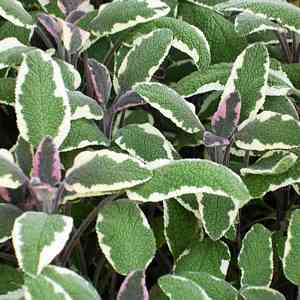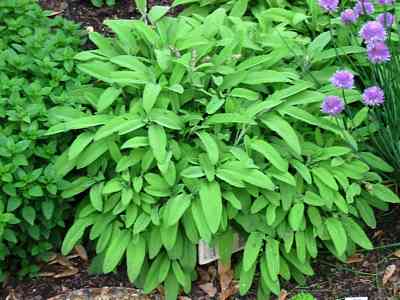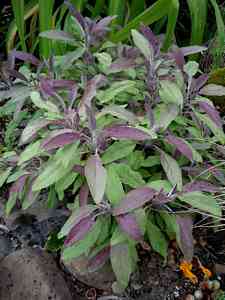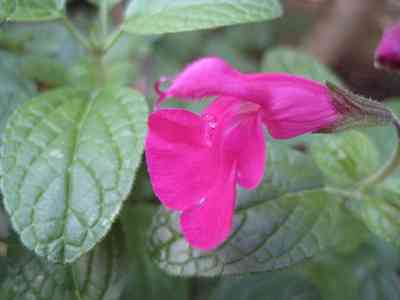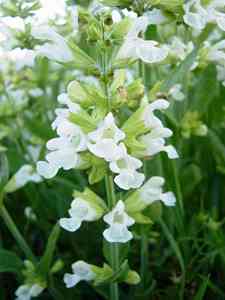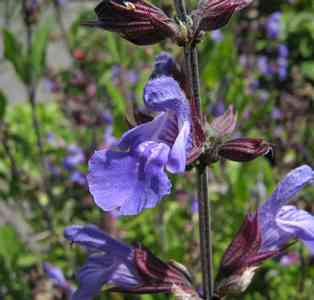Gardening in Spain Garden sage, Common sage.
Sage has been valued over the centuries by many cultures and has a long history of medicinal and culinary use, and in modern times as an ornamental garden plant.
The names Salvia and “Sage” are derived from the Latin salvere (“to save”), referring to the healing properties long attributed to the various Salvia species.
Sage
Salvia officinalis (Garden sage, Common sage) is a small perennial evergreen sub shrub with woody stems, grayish leaves, and blue to purplish flowers. It is native to the Mediterranean region, though it has naturalized in many places throughout the world.
Sage has been valued over the centuries by many cultures and has a long history of medicinal and culinary use, and in modern times as an ornamental garden plant.
The names Salvia and “Sage” are derived from the Latin salvere (“to save”), referring to the healing properties long attributed to the various Salvia species.
Solar systems
Salvia officinalis
Salvia officinalis is the ordinary garden sage best suited for cooking. There are other varieties that are pretty. Cherry sage has red tips. Golden sage is all golden. Both of these make nice garnishes, but do not have as intense a flavour as garden sage.
Salvia officinalis
comes in many varieties
Cultivars are quite variable in size, leaf and flower colour, and foliage pattern, with many variegated leaf types. The most common colour of the flowers is lavender, though they can also be white, pink, or purple. The plant flowers in late spring or summer.
To grow sage, you have several options. Seeds will grow if placed on a pre-moistened flat of soil and covered by 1/4 to 1/2 inch of soil. Cover the flat with plastic and place in a dark, warm place.
The soil needs to be around 70°F (21°C) for germination to occur.
In 7 to 21 days, the seeds will germinate. You will have to check on them often as the plants will need to be transplanted when they have two sets of true leaves.
Put them in individual pots and place the flat back into the dark to see if other seeds will germinate.
comes in many varieties
If you have a friend that has some sage, you can get a cutting and start that.
Dip the end in rooting hormone and plant it.
Give the plant a few weeks to establish roots and there you go.
Some of the more colourful sages can only be propagated from cuttings.
Finally, you can buy plants from most nurseries. Seeing, smelling, and tasting the plants are important because each variety has many variations itself, so you want to make sure you get what you mean to purchase.
You can transplant the plant easily into your prepared bed when you get home.
In any case, do not plant sage outside until all danger of frost has passed.
The coloured sages, especially, will not tolerate frost. Garden sage is more hardy, but only as a mature plant.
Comes in many varieties
It can grow into a 36 inch by 36 inch plant, so make sure you put it where there is plenty of room.
Otherwise, you will have to prune it to make it fit the space you have.
Never prune more than a third of the plant at a time, however.
5 Common Sage herb Plants
It takes sage three years to reach its full size. However, failing to plan can lead to overcrowding.
This leaves the plants vulnerable to fungal diseases and insect pests. It does not like excessive soil moisture or humid air.
Care should be taken to keep it moist, but a little drier than most plants.
If you live in a very humid climate, growing indoors may be the only way you can grow it.
Harvesting
Plants may be harvested as early as their first year, but it is better to let them concentrate on growth first and wait until the second year to start taking cuttings. Cut the sprigs for use fresh or dried.
Remember to cut no more than one third of the plant at a time. Your plant will put on fresh growth and be ready to harvest in two or three weeks.
Growing two or three plants and harvesting one each week is one way to ensure continuous availability of the herb.
Sage can be chopped up, placed in an ice cube holder, then covered with a little water, and frozen.
The cubes can then be placed in a plastic bag for convenient use in recipes. Freeze one tablespoon per cube, and simply take as many out as you need that day.
Marc Vijverberg
Sage-Plant Hardy evergreen perennial with green leaves.
Will grow to a height of approx 60-80cm.
Water well before planting. Can be planted all year round..
Leaves are used to make tea, and used for flavouring meat.
Traditionally used for stuffing goose and pork. As with all of out plants these plants are grown in at our nursery that has been growing top quality plants for over 60 years.
Horse Riding Holidays in Province of Almeria
A selection of Horse Riding Holidays in the Almeria Area TAKE YOUR PICK
===================================
46,51,9,36,photo size 50,21 rich.
Spain info covers local towns with local accommodation. also covers info local days out in Spain on the Mediterranean. info with information on gardening in Spain Mediterranean style. Spain info with information on cooking Mediterranean style.
Site info also covers Bowls Clubs Golf Go Karting fishing Caves and other sports here in the Mediterranean.
Spain info also lists the Local Hot Water Spas many of them dating back to Roman times.
Spain Info
Optimised April 28 P 92 W 100 July 11 H 70 Jan 23 Sage 28 H 93 Sage 31 H97 May 2 Oct 9 H 70 P 97 FK 100 F
Sage
Spain Info sage, San Francisco De Asis, Urb Marina, San Fulgencio, 03177, Alicante, Spain. 38n21, 0w29.
Site Disclaimer
Disclaimer: Whilst every effort has been made to provide accurate information, no liability will be accepted for misinterpretation, misrepresentation, errors or omissions - the information provided by our Websites is for use as a guide only and is issued in good faith as information..
All photographs images and FILM material is subject to the understanding that as they are in the public domain they can be used and shared as seen to be appropriate and unless showing a sign that they are covered by copyright law. This also covers Social media operations.
1999---2026
